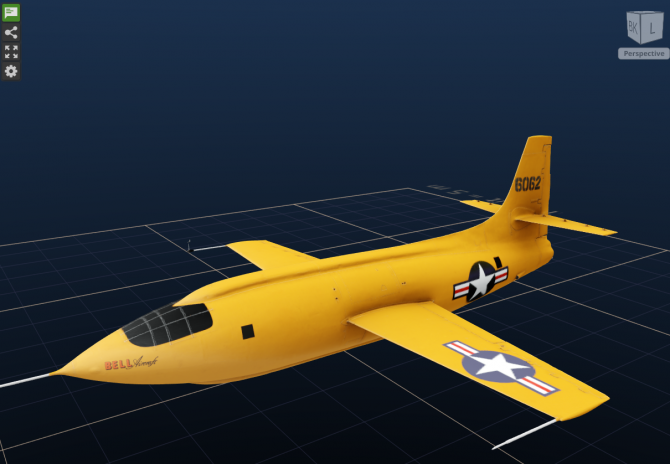 By FPL_Adam
By FPL_Adam
Did you know that you can recreate your own models of the scientific and historic artifacts at the Smithsonian? The Smithsonian has created high resolution 3D scans of these items and made them available not only to view, but also to download. With the downloaded STL files, it is possible to print a exact scale model from that file on a 3D printer.
One of those amazing treasures is the famed X-1 airplane that broke the sound barrier. Making your own version of this is as simple as downloading the STL file from the Smithsonian website (https://3d.si.edu/), scaling it to just the right size (try using Tinkercad.com), and then printing it with a 3D printer. Of course, don’t expect the 3D printer to print as fast as that X-1.
Need access to a 3D printer? Maybe a little help with the process? Come see us at the Frisco Public Library we have experienced staff that can help answer your questions and 3D printers available for the public to use and print off their 3D models. More information can be found on our 3D Printing page.

| On October 14, 1947, the Bell X-1 became the first airplane to fly faster than the speed of sound. Piloted by U.S. Air Force Capt. Charles E. "Chuck" Yeager, the X-1 reached a speed of 1,127 kilometers (700 miles) per hour, Mach 1.06, at an altitude of 13,000 meters (43,000 feet). Yeager named the airplane "Glamorous Glennis" in tribute to his wife. Above is an image of the 3D model available for viewing online and for download to be 3D printed. |



Add a comment to: 3D Printing Faster Than the Speed of Sound